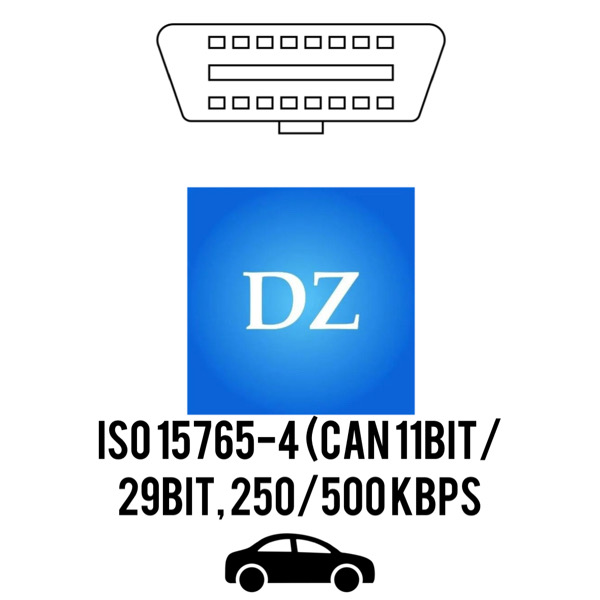ISO 15765-4 (CAN): Standard for High-Speed OBD-II Communication

ISO 15765-4, also known as CAN (Controller Area Network), is a communication protocol developed for modern OBD-II diagnostics. This standard enables fast and reliable data exchange between electronic control units (ECUs) in a vehicle, using 11-bit and 29-bit identifiers with transmission speeds of 250 kb/s and 500 kb/s.
How Does ISO 15765-4 (CAN) Work?
The CAN protocol uses a multi-master bus, allowing different ECU modules to send and receive data without conflicts. Each data packet contains a unique identifier, ensuring proper addressing and message priority. Speeds of 250 kb/s and 500 kb/s allow real-time sensor monitoring and advanced diagnostics, which are crucial for modern vehicles.
Launch OBD-II adapters that support the protocol:
DBScar I, DBScar II, DBScar III, DBScar IV, DBScar V, DBScar VII
ThinkDiag devices that support the protocol:
ThinkDiag, ThinkDiag 2
Ediag devices that support the protocol:
Ediag YA-101, Ediag YA-201, Ediag Plus, Ediag Elite

Vehicle types and brands supported by the protocol:
Passenger and light commercial vehicles from all manufacturers from 2003–2008, including Volkswagen, BMW, Mercedes-Benz, Audi, Ford, GM, Toyota, Honda, Nissan, and Mazda, as CAN became the standard for modern OBD-II systems.
Advantages of ISO 15765-4 (CAN)
- Fast and efficient communication between multiple ECU modules
- High reliability and resistance to electromagnetic interference
- Supports real-time diagnostics and complex vehicle functions
- Standardized for almost all new vehicles, especially European and American models
- Flexible for different transmission speeds and 11/29-bit identifiers
Disadvantages and Limitations
- Requires specific CAN-compatible diagnostic tools
- Increased complexity compared to older protocols (ISO 9141, SAE J1850)
- May require additional configuration in vehicles with multiple CAN networks
- Not directly compatible with older serial OBD-II protocols without an adapter
Applications of ISO 15765-4 (CAN)
The CAN protocol is used for reading and clearing DTC codes, monitoring live data, programming ECU modules, and overseeing advanced systems. Its high speed and reliability make it the standard for modern vehicles, including gasoline, diesel, hybrid, and electric models.
Conclusion
ISO 15765-4 (CAN) is a key protocol for modern OBD-II diagnostics. Its speed, reliability, and flexibility enable advanced diagnostics and management of complex vehicle systems, making it indispensable for professional diagnosticians and technicians.

